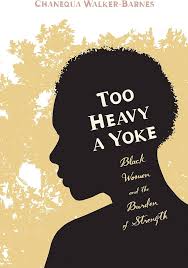Posted St. Louis American: Thursday, May 19, 2016 7:45 am
In my book “Ferguson is America: Roots of Rebellion,” I talk about the racist policies, laws and practices that concentrate poverty in the region. Where citizens are steered to live and work is a critical component of this reality.
One of the most powerful photos I’ve come across since writing the book is contained in the report by Richard Rothstein. It’s a 1916 propaganda piece with a photo of the 4300 block of West Bell Place which was part of a ballot initiative to preserve white neighborhoods. It was sponsored in part by the city’s real estate association. The campaign literature came with an ominous warning:
“LOOK at these homes NOW! An entire blocked ruined by negro invasion. Every house marked ‘X’ now occupied by negroes. SAVE YOUR HOME! VOTE FOR SEGREGATION!”
The ballot initiative passed.
What I underscore in my book is that housing patterns and housing discrimination in this region are not some serendipitous, disconnected plan. From the 1916 ballot initiative to the first “Negro removal” plan of Mill Creek to the failed Pruitt-Igoe public housing project to the Team Four scheme, city planners (in cahoots with other stakeholders) have worked tirelessly for decades to contain black and poor people. The intentional disinvestment and planned abandonment of entire sections of neighborhoods has had devastating consequences.
These racist patterns and their impact are no secret. There have been others who have documented this phenomenon in much greater detail that I was able to do in “Ferguson is America.”
These insights are included in books like Colin Gordon‘s “Mapping Decline” and Tracy Campbell’s “The Gateway Arch.” The failed housing policies have also been lifted up in reports like “Forward through Ferguson: A Path Toward Racial Equity,” and “Architecture of Segregation: Civil Unrest, the Concentration of Poverty, and Public Policy” by Paul Jargowsky, a fellow at The Century Foundation.
The vitality of a city’s neighborhoods are based upon viable schools, strong businesses, a good racial and economic mix of home owners, and adequate delivery of city and social services, among other factors.
We are almost two years out from the Ferguson Uprising in which housing concentrations by race and economics has been cited as a contributing factor. Yet there has been no serious examination by elected officials in the region to address the issue with a new and different lens that reflect a basic understanding of the seriousness of the problem. The long and treacherous history of racism in housing is no secret.
The good news is that we are in a couple of overlapping election cycles. Over the next year we will be electing state representatives and a new mayor for St. Louis. The issue of an equitable community development plan must be put to candidates. Any elected official wanting to hold public office must understand that in a post-Ferguson world, citizens are demanding a new vision for the region that includes racial and economic equity and, as a starter, guarantees citizens their fundamental right to a job with a liveable wage, decent housing, exemplary schools and public safety.



